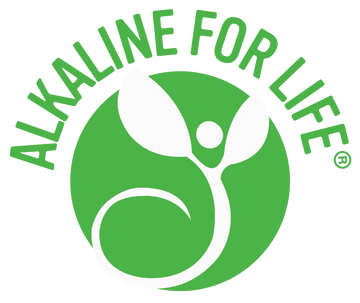
Vitamin C: Is It All the Same?
Vitamin C is an essential nutrient that is produced by all plants and most animals. Humans are an exception. While we need substantial amounts of vitamin C, we cannot produce this essential nutrient. “Vitamin C” is the term used commonly when discussing the many forms of this important nutrient.
Here at Alkaline for Life® we use and teach about the L-ascorbate form of vitamin C. This is the form of vitamin C that our body uses. Within the human body, 99% of the vitamin C under physiological conditions is in the form of L-ascorbate.
Another term that is often used for vitamin C is “ascorbic acid.” While “ascorbic acid” and “ascorbate” are often used without distinguishing one from the other, there are important differences between these two chemical compounds. Here are a few differences between common vitamin C which is ascorbic acid, and a fully buffered, fully reduced L-ascorbate.
Common Vitamin C versus “L-ascorbate”
Today in the US, most people supplementing with vitamin C use the “ascorbic acid” form, not the “ascorbate” form. Ascorbic acid is inexpensive and readily available; however, “ascorbic acid” is a distinct molecule from “ascorbate” as illustrated below.

Ascorbic Acid Ascorbate
Ascorbate is the metabolite of vitamin C actually used within the body and thus the preferable form of vitamin C. Ascorbate is the superior form of vitamin C for several reasons:
- Ascorbate is the physiological form of vitamin C used by the body.
- Ascorbate is the form of vitamin C that serves as the most powerful water-soluble antioxidant.
Ascorbate can have different qualities. First, it can be “fully reduced," which means its electrons are all in place and ready to be donated for full antioxidant activity. “Fully reduced” means that it is not already oxidized, even partially. To be “fully reduced” the ascorbate must be processed without exposure to oxygen, light or excess heat.
Second, ascorbate can also be “fully buffered.” A “fully buffered” ascorbate is one that has been combined with small amounts of selected minerals (for example, calcium, magnesium, zinc, potassium). “Fully buffered” ascorbate reduces metabolic acidity and contributes to a life-supporting, slightly alkaline tissue pH.
Over decades of clinical practice, I have found that a pure and properly processed, fully buffered and fully reduced ascorbate is a potent antioxidant and the best natural antiviral and repair agent available.
Comparison of Common Ascorbic Acid with a Fully Buffered, Fully Reduced Ascorbate
Common Vitamin C (aka Ascorbic Acid):
- Vitamin C is produced by plants and most animals (humans being one of the exceptions).
- Vitamin C/ascorbic acid is acidic.
- The vast majority of the vitamin C found on store shelves today is corn-based and contains corn antigens.
- The vast majority of the vitamin C found on store shelves today is at least one-half synthetic, in the D form, not the natural L form. This synthetic D form of vitamin C is not useful in the body.
- The vast majority of the vitamin C found on store shelves today has a reduced antioxidant potential due to processing. Vitamin C becomes oxidized upon exposure to oxygen, moisture, light, and high temperatures.
- The vast majority of the vitamin C found on store shelves today contains unwanted additives including colorings, flow agents, binders, stabilizers, and the like.
- The vast majority of the vitamin C found on store shelves has an unpleasant acidic taste, which limits higher dose usage.
A Fully Buffered, Fully Reduced Ascorbate (Alkalini-C):
- Ascorbate is a form of vitamin C that is actually used within the body.
- Ascorbate is the biologically active form of vitamin C, which serves as the most abundant and important water-phase antioxidant and a substrate for numerous enzyme reactions.
- Ascorbate is an alkalizing agent capable of donating electrons to energize our cells.
- Ascorbate can be completely buffered with alkalizing minerals to enhance absorption and tissue action.
- Alkalini-C ascorbate is fully reduced and protected from oxidation during manufacture and storage resulting in an extraordinarily high antioxidant capacity.
- Alkalini-C ascorbate is free of stabilizers, flow agents, or other additives.
- Alkalini-C ascorbate has a pleasant taste and is easy on the stomach, making it suitable for high-dose usage.
Ascorbic Acid (Common Vitamin C)
vs.
A Fully Buffered, Fully Reduced L-Ascorbate (Alkalini-C)
|
Ascorbic Acid/Common Vitamin C |
L-Ascorbate |
|
Produced in plants |
Physiologic form of vitamin C used in the human body |
|
Acidic |
Alkalizing |
|
Product is often oxidized with lowered antioxidant potential |
Fully reduced and protected from oxidation |
|
Made up of generally one-half of the synthetic D form that is not useful to body |
Natural L form that is useful to body |
|
Contains additives such as colorings, flow agents, binders, stabilizers, etc. |
Free of stabilizers, flow agents, or other additives |
|
Unpleasant taste limits high-dose use |
Pleasant taste suitable for high-dose use |


